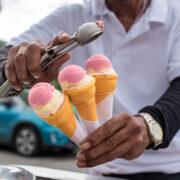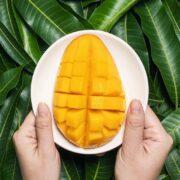As the relentless tropical sun blazes down, an unmistakable tinkling melody cuts through the dense, humid air – the joyful clarion call of the neighborhood’s sorbetero (ice cream vendor) making his daily sweet rounds.
In an instant, sleepy streets transform into scenes of euphoric pandemonium. Windows fly open and giddy youngsters come bursting out, bare feet pounding the pavement as they race towards that beloved harbinger of sugary bliss. Because for generations of Filipinos, few simple pleasures can top the delight of a treasured scoop of frozenness known affectionately as “dirty ice cream.”
While its cheeky moniker sounds unappetizing to the uninitiated, this kaleidoscopic array of icy street treats has been an indelible part of the nation’s cultural fabric for over a century, transcending mere refreshment to become an edible celebration of heritage, resilience, and joyful ingenuity.
The tradition traces back to the late 1800s when Chinese and Japanese migrants introduced locals to traditional frozen desserts like sorbetes, monos, and soy or coconut milk-based sweets. At the time, Western-style ice cream was considered an exotic luxury reserved for the Spanish elite. But the affordable handmade treats peddled by entrepreneurial immigrant vendors offered thrilling new tastes for the sweltering working masses.
Over decades, these novel icy delicacies melded with indigenous flavors and techniques, evolving into quintessentially Filipino creations. Local sorbeteros (ice cream makers) began experimenting with tropical ingredients like ube, mango, cheese, and indigenous spices – using wood-fired bain-maries and traditional wooden pitons to carefully churn out specialty small batches. An edible cultural heritage was born.

So how did these proudly homespun desserts ultimately earn the “dirty ice cream” label? The name nods to the often unsanitary, bare-bones production methods embraced by vendors to keep creations affordable for impoverished communities. From re-purposed iced storage containers to unfiltered water and makeshift containers, preserving rock-bottom pricing frequently took priority over health department guidelines.
Yet the “dirty” name is an endearment – a badge of blue-collar pride celebrating the same entrepreneurial grit, perseverance, and passion as the pioneering migrant vendors who sparked the tradition. Among working-class customers eagerly awaiting each vibrant treat, the moniker evokes nostalgia and comfort like a well-worn family heirloom.
“To me, dirty ice cream isn’t just a dessert but a taste of Filipino culture and our people’s ability to transform anything into deliciousness,” explains Sammy Reyes, a 72-year-old lifelong resident and self-proclaimed streetfood aficionado. “It celebrates our roots as hardworking, resilient people who still make time to appreciate life’s sweetest joys.”
For devoted modern-day sorbeteros keeping this sugary legacy alive, each handcrafted scoop transcends simple refreshments to become an edible masterpiece honoring generations of culinary ancestors.
Just ask Victor Ramirez, the 62-year-old “Dirty Ice Cream King” who has spent nearly four decades churning out his signature creations from a tiny home kitchen in Santa Mesa. Every pre-dawn morning, Ramirez can be found meticulously tending to batches of molten sweetness – bright ube, sunny calamansi, creamy cheese – using his late father’s cherished recipes. As he carefully ladles out each vivid, intricately flavored scoop, the sweat-soaked passion behind the craft is palpable.

By mid-morning, Ramirez’s iconic bright red sorbetes cart is carefully loaded with its dazzling technicolor payload – every scoop a jewel-toned delight promising euphoric refreshment from the oppressive heat. As his clan sets out to announce their arrival through the city streets with lively jingles, the abuelo’s siren song summons unbridled frenzies of scampering feet and joyful whoops ringing out from every alleyway.
Within moments, entire families come pouring out from ramshackle homes frantically waving pesos, adrenaline pumping at the prospect of biting into a few nirvana-tinged minutes of frosty salvation.
Suddenly, all the struggles, indignities, and scorching torments of adulthood melt away under waves of sugary euphoria with every lick, slurp, and rapturous nibble. Worries dissipate in divine sweet oblivion like shaved ice under the midday glare.
In these fleeting transcendent moments of unabashed bliss, one realizes no fancy packaging, upscale chic, or elite sugar alchemy could ever recreate the authentic fevered soul and chilled magic inherent to each scoop of Manila’s “dirty ice cream.”
These aren’t just cold desserts, but edible folklores celebrating cultural histories, indomitable spirit, and an unshakable zest for life’s most simple yet divine pleasures – a heritage as richly layered as the psychedelic wonders on offer from any roving street sorbetero.
So as this year’s summer inferno once again blankets the islands, one can only hope the joyful tinkles of arriving sorbeteros continue to resonate across neighborhoods for countless generations of imminent chilled happiness.
Because sometimes, the purest ecstasies in life really do come sanitized only by traditions of passion and love – not modern sterilization. And for Manila’s proud purveyors of so-called “dirty ice cream,” that’s a deliciously messy reality to savor without regret.






